#Cognitive Enhancement
Explore tagged Tumblr posts
Text
Navigating the Noetic Labyrinth: Meditative Praxis for the Exceptionally Gifted AuDHD Mind
The confluence of extreme giftedness and the AuDHD (Autism Spectrum Disorder/Attention-Deficit/Hyperactivity Disorder) neurotype presents a unique neurological architecture, manifesting as a heightened capacity for pattern recognition, hyper-focus, divergent thinking, and profound conceptual depth, often accompanied by sensory sensitivities, executive dysfunction, and intense internal…

View On WordPress
#ADHD#Attentional Regulation#AuDHD#Autism#Buddhist philosophy#Cognitive Enhancement#Complex Thought#Contemplative Practices#Dhyana#executive function#giftedness#High IQ#holistic practice#meditation#Mental Health#mindfulness#Neuro-Cognitive#Neuro-heterodoxy#neurodiversity#Neuroscience#Personalised Meditation#prajñā#Psychology#Raffaello Palandri#Sarvajñatā#Scientific Protocol#Self-regulation#Sensory Integration#Tantra#upekkhā
2 notes
·
View notes
Text

The Surprising Study Snack: Chocolate for Better Memory | @researchatory
Level up your study game with a little dark chocolate! Research suggests it can enhance focus and memory retention. Just a small piece might give you that extra edge. 😉
#StudyTips #BrainFood #ChocolateLover #MemoryBoost #DarkChocolateBenefits #StudentLife #CognitiveFunction #StudyFuel
That's fascinating! It's always interesting to see how everyday things can have surprising effects on our cognitive abilities. So, a little bit of dark chocolate might actually be a study buddy in disguise. It makes sense that increased blood flow and those stimulating compounds could give the brain a little boost when it's working hard.
It's good to know it's not a magic bullet, though. Consistent effort and effective study techniques are still key. But the idea of a small, enjoyable treat potentially enhancing learning is definitely appealing!
Keywords - (Studying, Chocolate, Dark Chocolate, Brain Food, Memory, Learning, Focus, Concentration, Cognition, Education, Student, Desk, Books, Notes, Snack, Treat, Brain Boost, Cognitive Enhancement, Academic, Knowledge, Flavonoids, Caffeine , Theobromine, Blood Flow, Alertness , Memory Retention, Test Scores, Cognitive Performance, Study Session, Exam Prep, Learning Tips, Student Life, Study Motivation, Smart Snacking)
#science#research#biotechnology#technology#sciencenews#innovation#nature#health#Studying#Chocolate#Dark Chocolate#Brain Food#Memory#Learning#Focus#Concentration#Cognition#Education#Student#Desk#Books#Notes#Snack#Treat#Brain Boost#Cognitive Enhancement#Academic#Knowledge#Flavonoids#Caffeine
3 notes
·
View notes
Text
Multiple efforts across the DoD explore technology-based means of cognitive enhancement. These techniques vary widely in terms of development, methods of application, and cost but should be considered part of an overall cognitive dominance strategy. For example, transcranial electrical stimulation (TES) enhances brain signals to mimic brain waves found during deep, restorative sleep to improve sleep quality. Thus, use of TES in a sleep deprived environment could allow soldiers to gain more restorative effects from brief periods of sleep to enhance cognition.
7 notes
·
View notes
Text
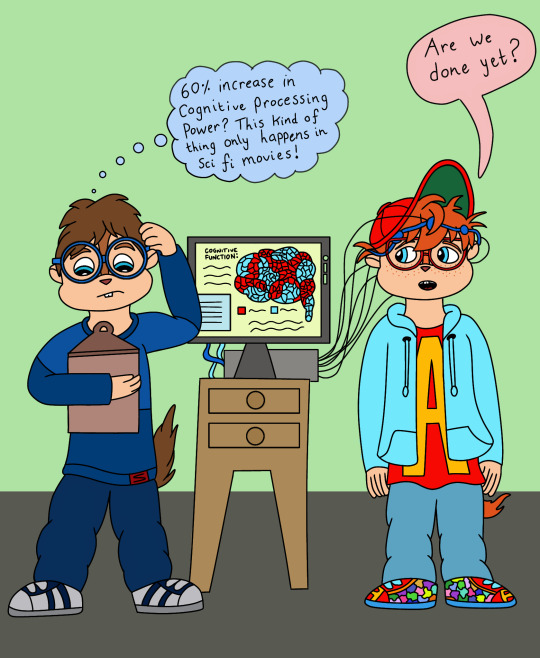
Really old art from back when Simon was trying to figure out how Alvin 2.0 could possibly exist.
#alvin and the chipmunks#alternative universe#alvin 2.0#smarter#cognitive enhancement#digital arwork#digital fanart
4 notes
·
View notes
Text
Eight Main Benefits of Nootropic Peptide Selank
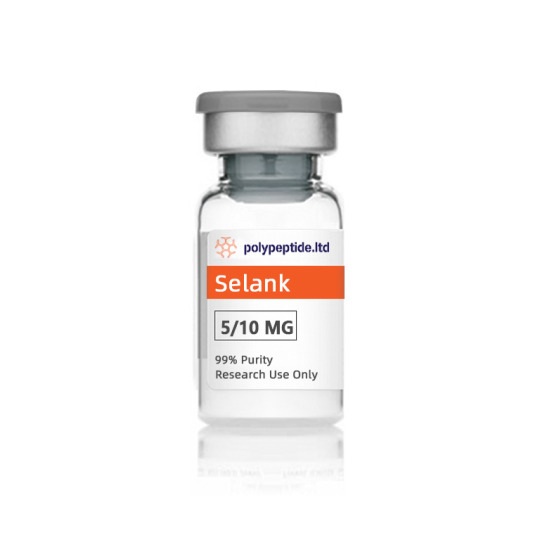
1.What is Selank?
Selank is a synthetic analogue of tuftsin, designed to be short in length. It possesses remarkable anti-anxiety properties, as well as the ability to enhance memory and learning. Additionally, Selank has demonstrated beneficial effects on pain perception.
2. How does Selank work?
Selank, a regulatory peptide, modulates various processes in the body. While it was previously believed that Selank directly affects GABA receptors and their binding to GABA, clinical trials suggest that Selank acts as an allosteric effector of GABA receptors instead.
Furthermore, Selank has been shown to stimulate the metabolism of neurotransmitters like serotonin and dopamine, thereby influencing the expression of genes related to neurotransmission in neuronal cells. Additionally, Selank promotes the expression of Brain-derived neurotrophic factor (BDNF), a protein important for neuronal survival and growth.
3. What are eight main benefits of nootropic peptide Selank?
Anxiety Reduction. Selank has been reported to possess anxiolytic properties, meaning it may help reduce anxiety. It is believed to interact with neurotransmitters in the brain, such as GABA, serotonin, and dopamine, which are involved in regulating mood and anxiety. By modulating these neurotransmitters, Selank may promote feelings of relaxation and reduce anxiety symptoms.
Mood Enhancement. Users have reported improvements in mood and emotional well-being when using Selank. It may help stabilize mood, increase feelings of happiness and contentment, and reduce negative emotions such as irritability or sadness. By influencing neurotransmitter levels, Selank may contribute to a more positive and balanced mood.
Cognitive Enhancement. Selank is often regarded as a nootropic due to its potential cognitive-enhancing effects. It may improve various aspects of cognitive function, including memory, focus, attention, and learning speed. Some studies suggest that Selank enhances the release and metabolism of neurotransmitters involved in cognitive processes, such as acetylcholine and dopamine, leading to improved cognitive performance.
Stress Reduction. Chronic stress can have detrimental effects on both mental and physical health. Selank may help mitigate the impact of stress by regulating stress hormone levels, such as cortisol, and modulating the stress response in the body. By promoting a more balanced stress response, Selank may reduce the negative effects of chronic stress and promote overall well-being.
Antidepressant Effects. While further research is needed, Selank has shown potential as an adjunct treatment for depression. It may act as an antidepressant by influencing neurotransmitters associated with mood regulation, such as serotonin and dopamine. By modulating these neurotransmitters, Selank may help alleviate depressive symptoms and improve overall mood.
Neuroprotective Effects. Some studies suggest that Selank has neuroprotective properties, meaning it may help protect neurons from damage or degeneration. It may support the survival and growth of neurons and promote neuronal plasticity, which is important for learning and memory. These neuroprotective effects of Selank could have implications for the prevention or management of neurodegenerative conditions.
4. Side effects of Selank?
Selank’s most frequent side effects are:
Anxiety
Headaches
Nausea
Dizziness
Fatigue
There are also some less frequently reported side effects of Selank, which include:
Insomnia
Irritability
Muscle cramps
Joint pain
Selank should be stopped if any of these side effects persist, or worsen.
5. What is the recommended dosage for Selank?
The recommended dosage for Selank can vary depending on several factors, including individual response, desired effects, and the specific formlof administration (subcutaneous injection or intranasal spray). It is crucial to consult with a healthcare professional or refer to reliable sources forl accurate dosage guidance.
While specific recommendations may vary, a commonly suggested dosage range for Selank is:
Subcutaneous Injection: the recommended dosage typically falls within the range of 100 to 300 micrograms (mcg) once per day.
Intranasal Administration (Nasal Spray): the recommended dosage generally ranges from 750 to 1,000 mcg once per day. If needed, this dosage can be divided into several smaller doses throughout the day.
#Selank#Nootropic Peptide#Eight Main Benefits#Polypeptide#Semax#popular peptide#Anxiety reduction#Cognitive enhancement#Antidepressant Effects
4 notes
·
View notes
Text
I didn't realize that this kind of executive dysfunction had a specific name in autism. In the psychiatric literature I usually see it called low/poor/impaired “task-switching,” “attentional switching,” or more broadly “cognitive flexibility.” But I do like the name “inertia” because IME that is often how it feels.
Autistic inertia is probably just as common in ADHD, and probably experienced in basically the same way. “No differences in EF [executive functioning] were found between individuals diagnosed with ASD and ADHD” in a meta-analysis study trying to tease out differences between them, including on tests of cognitive flexibility.
50%–70% of autistic people have ADHD, making the conditions very frequently comorbid. Both are also highly (genetically) heritable, and both involve (itself extremely heritable) executive dysfunction.
Improving your task-switching and overcoming inertia is probably best accomplished the same way that we treat other kinds of executive dysfunction: stimulants like Adderall, caffeine (especially taken with L-theanine), and Ritalin. After all, unmedicated kids with ADHD are worse at task-switching than neurotypical kids, but ADHD medication makes their task-switching equivalent. Ritalin “selectively enhanced the children's ability to rapidly and accurately switch between tasks.”
IIRC exercise, nutrition, and (especially) getting enough/consistent sleep also help to improve task-switching.
…and yes, I did write this post while struggling to switch to a different task. Namely, my actual job. Heh. Hooray for autistic inertia…
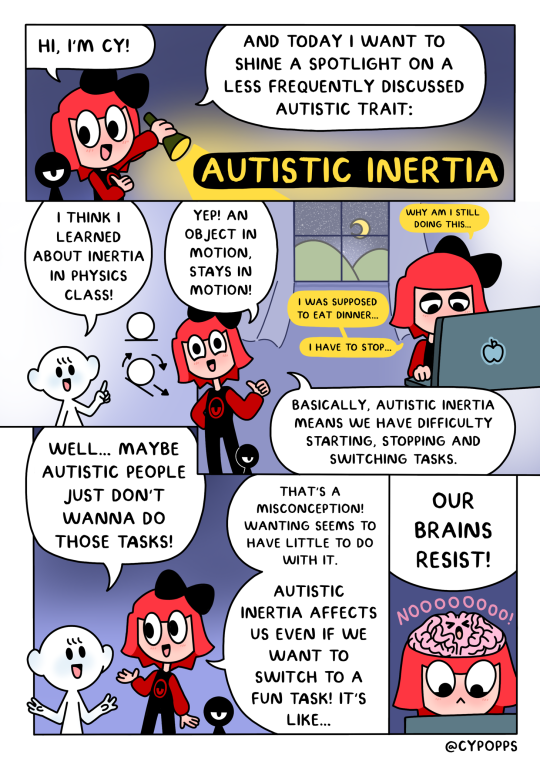
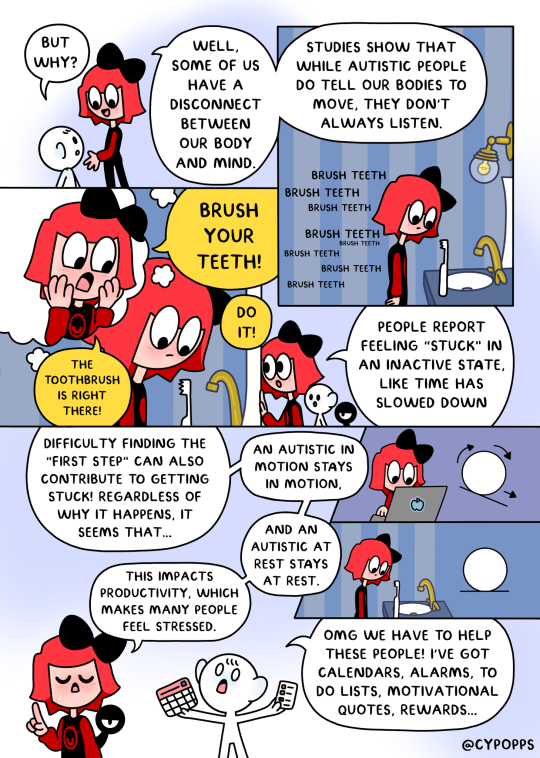
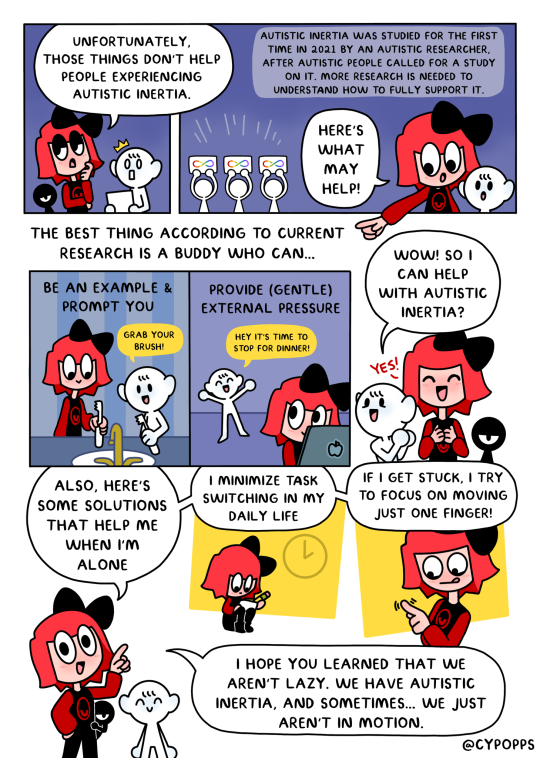
Autistic Inertia is an autism experience that makes it hard to start, stop, and switch tasks.
It somehow doesn't get talked about enough - so I made this comic!
YouTube • Instagram • Twitter
Also, if you want to read the research study I based this comic on, it’s right here!
#psychology#psychiatry#neurodivergence#autism#autistic inertia#ADHD#executive dysfunction#comic#original content#(in that I added to the post)#research#cognitive enhancement#stimulants#medication#caffeine#L-theanine#queue
60K notes
·
View notes
Text
Are You Seeking a Mental Edge Without the Crash? Discover Natural Nootropics That Deliver Sustainable Cognitive Enhancement

In an era where mental agility is paramount, many are turning to natural nootropics—substances known to enhance cognitive function—to boost memory, focus, and overall brain health. The article Top Rated Nootropics: The Best Natural Supplements for Cognitive Enhancement from Nootropics Planet delves into the most effective natural supplements that offer cognitive benefits without the adverse effects associated with synthetic stimulants.
The article highlights several key natural nootropics:
Bacopa Monnieri: An Ayurvedic herb renowned for improving memory retention and cognitive function by enhancing synaptic communication and protecting neurons from oxidative damage.
Rhodiola Rosea: An adaptogen that combats mental and physical fatigue, regulates cortisol levels, and enhances dopamine and serotonin activity, thereby improving mood and focus.
L-Theanine and Caffeine: A synergistic duo where L-Theanine promotes relaxation without drowsiness, and caffeine enhances alertness, together improving attention and reaction time.
Lion’s Mane Mushroom: A natural nootropic that stimulates Nerve Growth Factor (NGF) production, supporting neurogenesis and cognitive function.
Ginkgo Biloba: Known for enhancing cerebral blood flow and cognitive function by increasing nitric oxide levels, thus improving oxygen delivery to neurons.
These natural supplements work by modulating neurotransmitter levels, increasing cerebral blood flow, and reducing oxidative stress, thereby supporting long-term brain health and cognitive performance.
For those interested in exploring the world of cognitive enhancement through natural means, Nootropics Planet offers a wealth of information on various supplements, their mechanisms of action, benefits, and scientific backing. Visit Nootropics Planet to learn more about how to optimize your brain function naturally.
0 notes
Text
Boost Mental Clarity with These Simple Daily Habits
Want a sharper mind? These habits can boost your mental clarity and focus. Try them today. Start Your Day with a Glass of Water Hydration fuels the brain. Drinking a glass of water after waking up kickstarts your metabolism. It flushes out toxins and helps your mind feel more alert. Prioritize Quality Sleep Every Night Good sleep isn’t optional. Aim for 7-9 hours every night. A rested brain…

View On WordPress
#Brain fog remedies#Brain health#Cognitive enhancement#Meditation for focus#Mental clarity#Mental clarity exercises#Mental energy#Mental focus techniques#Mental performance#Mindfulness practices#Natural nootropics#Neuroplasticity#Supplements for brain function
0 notes
Text
The Memory Wave is an innovative audio program that boosts cognitive function by activating Gamma brain waves. In just 12 minutes a day, it enhances memory, sharpens focus, and promotes mental clarity. Experience improved mental performance with The Memory Wave!
Read more:
#the memory wave#the memory wave program#the memory wave official website#the memory wave reviews#brain booster#self development#brain exercises#cognitive enhancement
1 note
·
View note
Text
Harmony with Western Music Traditions
Interestingly, the principles that make ambient music effective for studying can be traced back through various movements in Western music. For instance, the minimalist composers of the late 20th century, such as Philip Glass and Steve Reich, utilized repetitive structures and gradual transformations, creating pieces that evoke a sense of calm while engaging the listener's mind. This approach parallels the ethos of ambient music, where the focus is on creating an immersive experience rather than drawing attention to a specific melody or rhythm.
Moreover, the use of drones and soft textures in ambient music can be compared to the tonal landscapes found in orchestral works by composers like Erik Satie, who believed in the power of music to evoke a certain atmosphere. Satie's innovative piano compositions, often imbued with simplicity and elegance, resonate with the tranquil aura of ambient music, demonstrating a long-standing appreciation for soundscapes that soothe rather than stimulate.
When curating a study playlist, consider blending ambient tracks with minimalist and impressionist pieces from Western music. Works like Songs From the Saddle can create a rich auditory experience that promotes focus without overwhelming the senses. Ambient music is more than just a background soundtrack; it’s an essential ingredient in the cocktail of effective study strategies. Its roots in Western music traditions allow it to connect with a rich history of sound and atmosphere that continues to inspire concentration and creativity. So, the next time you sit down to study, consider tuning into some ambient soundscapes—your mind will thank you!
#ambient music#studying#concentration#productivity#Western music#music for studying#soundscapes#creative environment#focus#study playlist#atmospheric music#tranquility#relaxation#acoustic sounds#audio experience#impressionism#music therapy#educational tools#cognitive enhancement#sound therapy#background music#tranquil soundscapes#musical focus#creativity#auditory environment#ambient soundtracks#stress relief#study aids#effective study techniques#immersive music
0 notes
Text
Boost the Power of Your Brain: The Role of Nootropics in Cognitive Vitality
The Ever-Changing Brain: What Happens as We Age? The human brain is an intricate, ever-evolving network of neurons, synapses, and biochemical processes. Over time, subtle yet profound shifts occur—altering cognition, memory, and even personality. However, science has uncovered ways to counteract these changes, largely through the strategic use of nutrients and supplements. Enter nootropics:…
0 notes
Text
Centella asiatica: The humble healing herb of the Tropics
As the warm sun bathes the lush tropical landscapes, many might overlook a humble herb that has been revered for centuries—Centella asiatica, commonly known as gotu kola. This resilient plant, with its small, rounded to kidney-shaped leaves and delicate white flowers. I like it’s Portuguese name, Pé-de-Cavalo (literally – foot of horse), which seems like an accurate description of the shape of…

View On WordPress
#Botany#Centella asiatica#Cognitive enhancement#Gotu kola#Herbal medicine#Natural remedies#Traditional medicine#Tropical plants
0 notes
Text
Memory Improvement Techniques for Elderly Individuals
Keeping your memory sharp as a tack! 🧠✨ Discover easy techniques to boost memory and outshine the youngsters! 😂📚 #ElderlyMemory #SeniorHealth #BrainTraining #CognitiveBoost #MentalWellness #HealthyAging #MemoryTechniques #BrainPower
As we get older, our memory and thinking skills might change. But, there are ways to make our brains work better. These memory tricks can really help us remember things better. It’s important to know how aging affects our memory. Doing things like staying active, keeping in touch with friends, and eating well can help our brains. These actions are key to keeping our minds sharp. In the next…
#Aging Brain#Brain Training#Cognitive Enhancement#Elderly Memory#Healthy Aging#Memory Improvement#Memory Techniques#Mental Wellness#Senior Cognitive Health#Senior Health
0 notes
Text
The Noosphere: Merging Philosophy and Transhumanism
#artificial intelligence#biosphere#biotechnology#cognitive enhancement#collective consciousness#collective knowledge#collective mind#digital realm#ethical responsibility#geology#geosphere#global communication#human agency#human evolution#human thought#ideological polarisation#intellectual activity#interconnectivity#internet#misinformation#Noosphere#Omega Point#philosophy#Pierre Teilhard de Chardin#planetary influence#science#spiritual evolution#superintelligence#technological progress#technological transformation
0 notes